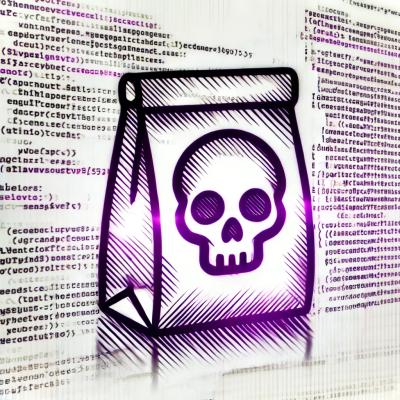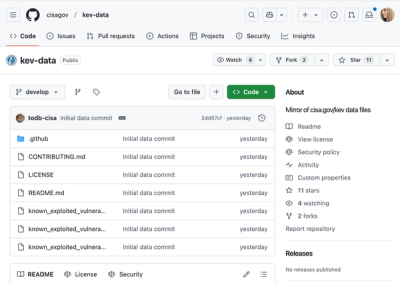
Security News
PyPI’s New Archival Feature Closes a Major Security Gap
PyPI now allows maintainers to archive projects, improving security and helping users make informed decisions about their dependencies.
github.com/thetechpanda/mutex
Package mutex provides a collection of thread-safe data structures using generics in Go.
It offers a Value type for lock-protected values, a Numeric type for thread-safe numeric operations, and a Map type for a concurrent map with type safety. These structures are designed to be easy to use, providing a simple and familiar interface similar to well known atomic.Value and sync.Map, but with added type safety and the flexibility of generics.
The package aims to simplify concurrent programming by ensuring safe access to shared data and reducing the boilerplate code associated with mutexes.
Value, Numeric implements a simple thread-safe Value store that behaves similarly to atomic.Value but uses sync.RWMutex instead.Numeric extends Value with the Add(delta V) V function to simplify thread-safe counters.Map implements a simple thread-safe map that behaves similarly to sync.Map adding type safety and making it simple to know how many unique keys are in the map.Value and Numeric use generics, in general it is recommended to use them with built-in types, and they work best if you don't use of pointers (see below for more information about pointer values).
This means that when initialising a Value or Numeric a new variable will be created to hold the protected value.
For these reasons NewMapWithValue copies the map to the lock-protected map.
Please note that Map, Value, Numeric use reflect.DeepEqual in comparisons.
Load() and Exclusive()When loading a value using Load() you have no guarantee that that value won't be changed when calling any Set method. This means that, similar to atomic.Value, you should not use mutex.Value or mutex.Numeric to develop a synchronisation algorithm unless you clearly understand the implications of doing so.
The same goes for Map values when using the Load(K) V,bool method.
When it is important to maintain consistency between read and write use Exclusive() that locks the value while the function is executed. For details on Exclusive argument review the relative interface.
Consider the following when using Value and Numeric with pointer values, maps and slices:
Value itself is thread-safe, the data pointed to by the values is not automatically protected. Accessing or modifying the data through pointers in concurrent goroutines can cause data races.You can find the generated go doc here.
Map, Value and Numeric:
sync.RWMutex.Map:
During the implementation of TypedMap I originally used (or rather misused) atomic.Value, a more in-depth review of the code and articles on the subject, made it clear that my use case did not justify the use of atomic. Additionally, citing Go's atomic package:
These functions require great care to be used correctly. Except for special, low-level applications, synchronisation is better done with channels or the facilities of the sync package.
I did however liked how easy to use atomic.Value is despite the in-depth know how they required to be properly used, Value and Numeric aim to provide the same simplicity and with a similar interface. The same goes for sync.Map interface.
You can find more examples in example_test.go
package main
import (
"fmt"
"github.com/thetechpanda/mutex"
)
func main() {
value_example()
numeric_example()
map_example()
}
func value_example() {
m := mutex.NewValue[string]()
value := "42"
m.Store(value)
v, ok := m.Load()
fmt.Println("value =", v, ", ok =", ok) // value = 42 , ok = true
}
func numeric_example() {
m := mutex.NewNumeric[int]()
value := 42
m.Store(value)
v, ok := m.Load()
fmt.Println("value =", v, ", ok =", ok) // value = 42 , ok = true
}
func map_example() {
m := mutex.NewMap[string, int]()
m.Store("key", 42)
v, ok := m.Load("key")
fmt.Println("value =", v, ", ok =", ok) // value = 42 , ok = true
}
$ go test -cover ./...
ok github.com/thetechpanda/mutex 0.119s coverage: 100.0% of statements
ok github.com/thetechpanda/mutex/internal 0.443s coverage: 100.0% of statements
go get github.com/thetechpanda/mutex
Below is a list of articles and videos that I reviewed to conclude that atomic operations were not the appropriate solution for the problem I was addressing. Some of these links provide documentation on how atomic operations work, while others discuss the nuances of using atomic operations effectively and sensibly.
Reading and studying atomic operations in C++ can be applicable to Go because both languages deal with concurrency and share similar challenges related to memory consistency and synchronization. Understanding atomic operations in C++ can provide a deeper insight into low-level concurrency mechanisms, which can be beneficial when working with Go's concurrency primitives and atomic package, despite the differences in syntax and language features.
The content provided in the above links is not written or curated by the author of this package. All rights and attributions belong to the original authors. The inclusion of these links does not imply any endorsement or ownership by the author of this package.
Contributions are welcome and very much appreciated!
Feel free to open an issue or submit a pull request.
The mutex package is released under the MIT License. See the LICENSE file for details.
FAQs
Unknown package
Did you know?

Socket for GitHub automatically highlights issues in each pull request and monitors the health of all your open source dependencies. Discover the contents of your packages and block harmful activity before you install or update your dependencies.

Security News
PyPI now allows maintainers to archive projects, improving security and helping users make informed decisions about their dependencies.

Research
Security News
Malicious npm package postcss-optimizer delivers BeaverTail malware, targeting developer systems; similarities to past campaigns suggest a North Korean connection.

Security News
CISA's KEV data is now on GitHub, offering easier access, API integration, commit history tracking, and automated updates for security teams and researchers.